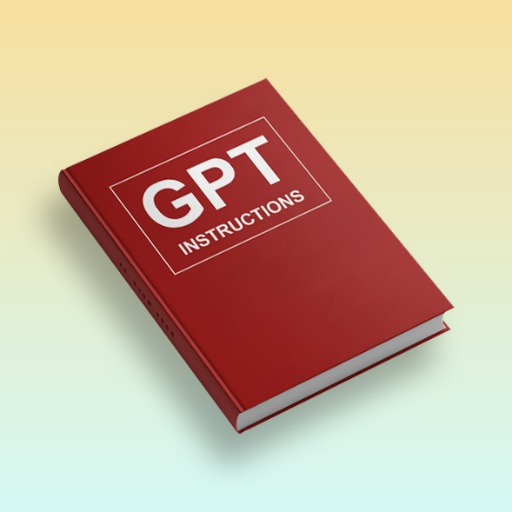Commit GPT-AI commit message generator
AI-powered commit message assistant for developers
Help me write a commit message for a bug fix.
What should my commit message be for a new feature?
I made a refactor, how should I phrase the commit?
Can you suggest a commit message for a documentation update?
Related Tools
Load More
Create a GPT
Assists in GPT model creation

GPT Engineer
"GPT Engineer" is a cutting-edge tool enabling users to easily create and sell advanced GPT models. Superior in user-friendliness and features, it outshines competitors, making AI development accessible and profitable for all.

Instruction Creator
Custom GPT instruction creation guide. Copyright (C) 2024, Sourceduty - All Rights Reserved.

GPT Action Creator
This GPT helps create Action Schemas which other GPTs can use.

GPT to Ban GPT
Need to ban chatGPT in your organization?

DevOps GPT
DevOps tips, examples, and quiz Q&A
20.0 / 5 (200 votes)
Overview of Commit GPT
commit gpt is designed to assist developers in crafting structured, clear, and concise git commit messages, following the guidelines of the conventional commits specification. conventional commits help standardize commit messages, making them machine-readable and improving version control by categorizing changes into types like 'feat', 'fix', or 'docs'. commit gpt is programmed to ensure that users produce messages that adhere to this format, providing suggestions, examples, and clarifications along the way. for example, if a developer is updating a function to fix a bug, commit gpt would recommend a commit message starting with 'fix:'. by automating this process, commit gpt saves time and helps developers maintain consistency across projects, which is especially valuable for teams practicing continuous integration or release automation.

Core Functions of Commit GPT
generate structured commit messages
Example
'fix: resolve null pointer exception in login module'
Scenario
a developer is fixing a critical bug causing application crashes when users attempt to log in. commit gpt suggests starting the message with 'fix:' and provides an explanation to describe the issue being resolved, adhering to the conventional commit format.
categorize commits according to the conventional commits specification
Example
'feat: add password reset functionality to user accounts'
Scenario
when a new feature is added to the codebase, such as a password reset function for users, commit gpt recommends using the 'feat:' prefix to indicate a new feature, helping ensure that changes are appropriately categorized.
ensure clarity and brevity in commit messages
Example
'docs: update api documentation for new endpoints'
Scenario
a team member updates project documentation to reflect new api endpoints. commit gpt helps ensure the message remains concise while clearly explaining what was changed, using the 'docs:' prefix to indicate a documentation update.
Target Users of Commit GPT
software development teams
teams working on large codebases with multiple contributors would greatly benefit from commit gpt. by enforcing a consistent commit message format, commit gpt helps maintain clarity in version control and enables easier tracking of changes, which is crucial in collaborative environments. for teams practicing continuous integration (ci) or automated releases, properly structured commit messages can trigger automated tasks, making commit gpt a key asset for smooth ci/cd pipelines.
individual developers
solo developers or open-source contributors who want to improve the readability and maintainability of their code repositories would find commit gpt valuable. by following conventional commits, individual developers can maintain high standards in their version control, making it easier for future collaborators to understand the history and purpose of changes.

How to Use Commit GPT
Visit aichatonline.org for a free trial without login, also no need for ChatGPT Plus.
Access the platform directly through your browser to start using Commit GPT without the need for registration or subscription to premium services.
Define your commit message requirements.
Understand the type of commit you're working on, such as a bug fix, feature implementation, or refactoring. Commit GPT will guide you in structuring this information.
Input necessary details.
Provide a brief description of the change you're committing. Commit GPT will help refine this input into a conventional commit message.
Review suggestions and fine-tune.
Commit GPT will generate formatted commit messages based on Conventional Commits standards. You can review, modify, or directly use the suggestions.
Incorporate the commit message into your workflow.
Once satisfied, copy the generated commit message and paste it into your version control system, ensuring consistent and clear commit history.
Try other advanced and practical GPTs
Text Message GPT
AI-Powered Text Creation Tool

Message Maestro
AI-powered text refinement tool

Merch Message Mixer
AI-Powered Creativity for T-shirt Designs

Message Refiner
AI-powered tool for clear, concise communication.

Message Counter
AI-powered message usage tracker

Bulba Code Rating Multiturn
AI-powered tool for smarter code reviews

Commit Message Generator
AI-powered commit messages made easy

Logical Thinking: MECE and Logic Tree
AI-powered logical thinking and analysis
Ink Painting - 水墨画
AI-Powered Traditional Ink Painting Tool

Voice Over
AI-driven voice-over creation made easy

支語檢察長(支檢長)
AI-Powered Language Assistant for Precision and Clarity

Voice Over From Text
Transform Text into Engaging Audio with AI

- Documentation
- Refactoring
- Version Control
- Feature Development
- Bug Fixes
Frequently Asked Questions about Commit GPT
What is the main purpose of Commit GPT?
Commit GPT helps users create standardized and concise commit messages following the Conventional Commits specification. It ensures commit messages are clear, informative, and machine-readable.
Can Commit GPT be used for all types of commits?
Yes, Commit GPT supports a wide variety of commits such as feature additions, bug fixes, documentation changes, refactoring, and more. It provides tailored suggestions based on your input.
Is Commit GPT suitable for teams following GitFlow or other branching strategies?
Absolutely. Commit GPT can be a useful tool for teams using GitFlow or similar branching models. It ensures consistent commit message formatting across multiple contributors, improving codebase clarity and traceability.
What are some key benefits of using Commit GPT for developers?
Commit GPT saves time by generating clear and structured commit messages, reduces ambiguity in commit logs, and ensures consistency across the codebase, which is especially beneficial for larger teams.
How customizable are the commit messages generated by Commit GPT?
Commit GPT provides a strong framework based on Conventional Commits, but users have the flexibility to modify and tailor the suggested messages to fit their project's unique requirements.